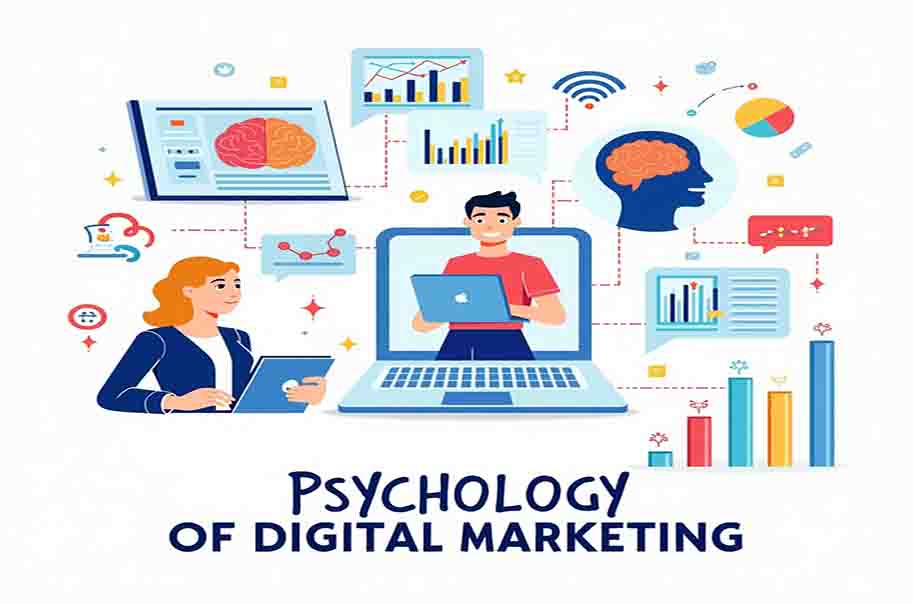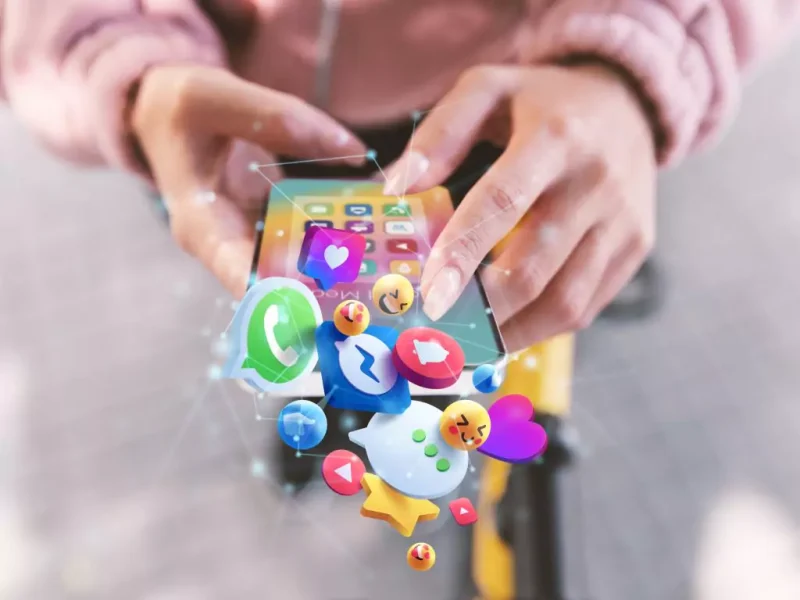Introduction
Why do some marketing campaigns go viral while others fail to make an impact? Why do consumers make impulsive purchases or stay loyal to certain brands for years? The answer lies in consumer psychology.
Digital marketing is more than just creating ads and content; it is about understanding how people think, what drives their decisions, and how emotions influence buying behavior. Businesses that incorporate psychological principles into their marketing strategies can create more engaging campaigns, increase conversions, and build strong brand loyalty.
This article explores key psychological principles behind successful digital marketing and how you can use them to connect with your audience and boost sales.
1. The Power of Storytelling
People buy not just products but stories, emotions, and experiences. Storytelling is one of the most effective ways to engage an audience and make a brand memorable.
Why Storytelling Works
- Stories create an emotional connection with the audience.
- Studies show that people remember stories 22 times more than plain facts.
- Consumers relate to characters, struggles, and resolutions, making them more invested in a brand.
How to Use Storytelling in Digital Marketing
- Share customer success stories to showcase real-life impact.
- Create behind-the-scenes content to humanize your brand.
- Use user-generated content to highlight real experiences with your product.
Brands like Nike and Apple have mastered storytelling by making their customers the hero of their campaigns. Their ads do not just promote products; they promote aspirations, lifestyles, and emotions.
2. The Scarcity & Urgency Effect
Consumers are more likely to take action when they feel they might miss out. Scarcity and urgency play on the Fear of Missing Out (FOMO), pushing people to make quick decisions.
Why Scarcity Works
- Limited-time offers create a sense of urgency and drive impulse purchases.
- Low-stock warnings encourage immediate action.
- Time-sensitive discounts increase conversion rates by up to 332%.
How to Use Scarcity in Marketing
- Use phrases like “Only a few left” or “Offer ends soon”.
- Display real-time purchase counts or stock availability.
- Implement flash sales and countdown timers to encourage immediate action.
E-commerce brands like Amazon use this tactic effectively by showing stock availability and time-sensitive deals, leading to faster conversions.
3. The Social Proof Effect
People trust what others say about a product more than what the brand claims. Social proof reassures potential customers that they are making the right choice.
Why Social Proof is Powerful
- 92% of consumers trust peer recommendations over brand messaging.
- User-generated content increases engagement and trust.
- Positive reviews can boost conversion rates by 270%.
How to Leverage Social Proof
- Showcase customer testimonials and case studies.
- Highlight real-time purchases or trending products.
- Use influencer partnerships to enhance credibility.
Businesses like Airbnb and TripAdvisor thrive on social proof by encouraging customers to leave reviews and share experiences.
4. Personalization: Making Every Customer Feel Special
Consumers are bombarded with ads daily, but personalized content stands out. When a brand tailors its messaging to an individual’s preferences, engagement rates soar.
Why Personalization Works
- Personalized emails generate 6 times higher transaction rates.
- Customers feel valued, increasing brand loyalty.
- Relevant recommendations drive higher conversion rates.
How to Implement Personalization
- Use customer data to deliver targeted product suggestions.
- Send customized email offers based on purchase history.
- Create dynamic content that adapts to user preferences.
Netflix and Spotify use personalization to keep users engaged by recommending content based on past behavior.
5. The Role of Colors in Decision-Making
Colors influence emotions and perceptions, making them a key factor in digital marketing success. Different colors trigger different psychological responses, affecting how consumers perceive a brand.
Color Psychology in Marketing
- Red creates urgency (often used in sales and clearance events).
- Blue conveys trust and professionalism (popular in tech and finance brands).
- Yellow evokes happiness and optimism (used by brands like McDonald’s).
How to Use Colors Effectively
- Align brand colors with the desired emotional response.
- Use contrasting colors to make CTAs stand out.
- Test different color variations in A/B campaigns to measure performance.
Brands like Coca-Cola (red for excitement) and Facebook (blue for trust) use color psychology to strengthen their branding.
6. The Reciprocity Principle: Give Before You Get
People feel obligated to return favours. When a brand provides free value, consumers are more likely to engage and convert.
How to Use Reciprocity in Marketing
- Offer free resources, such as eBooks, guides, or exclusive content.
- Provide free trials or samples to build trust.
- Deliver valuable insights before asking for a sale.
This principle is the foundation of content marketing, where businesses offer valuable information in exchange for audience trust.
7. Simplicity & Clarity: Less is More
Consumers make decisions in seconds. A cluttered or confusing website or ad can result in high bounce rates. Keeping marketing messages simple and clear ensures higher engagement.
How to Apply Simplicity in Marketing
- Use clear and concise messaging in ads and content.
- Ensure websites have easy navigation and minimal distractions.
- Keep call-to-action (CTA) buttons simple and direct.
Google’s homepage is a perfect example of simplicity—clean, clear, and to the point.
Conclusion
Understanding consumer psychology is the key to digital marketing success. By leveraging storytelling, social proof, personalization, and psychological triggers like scarcity and reciprocity, brands can create more engaging and effective marketing campaigns.
Instead of just selling a product, focus on building an emotional connection with your audience. The more aligned your marketing strategies are with human behavior, the higher your engagement, conversions, and customer loyalty.
Would you like to see how these strategies can be applied to your business? Start implementing them today and watch your marketing efforts thrive.


